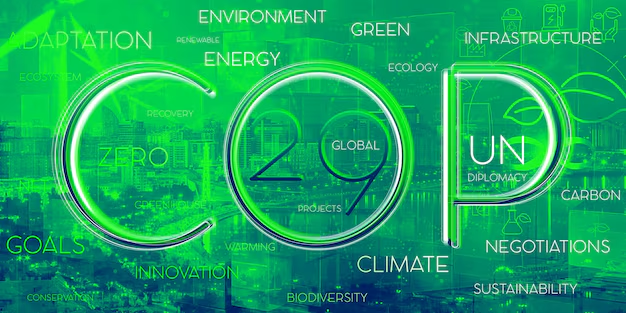The Power of Green APIs
Building Sustainable Apps for a Net-Zero Future

As businesses worldwide face growing pressure to achieve net-zero, integrating sustainability into digital ecosystems has become a competitive necessity. Regulations like the EU’s CSRD and consumer demand for eco-conscious brands, with 80% prioritizing transparency per a 2025 Nielsen survey, are driving this shift. Green APIs, application programming interfaces that embed environmental metrics like carbon emissions into apps, are emerging as a game-changer. At the World of Circular Economy (WOCE), our Green API ecosystem empowers developers and businesses to create sustainable applications aligned with global climate goals. This article explores the critical role of Green APIs in building sustainable apps, the challenges they address, and how WOCE’s ecosystem is paving the way for a greener digital landscape.
What Are Green APIs?
Green APIs are specialized interfaces that enable applications to incorporate sustainability data, such as carbon emissions, energy use, or resource consumption, into their core functionality. Unlike traditional APIs focused on data exchange or user experience, Green APIs prioritize environmental impact, offering real-time tracking and decision-making tools to reduce carbon footprints. For instance, a logistics app can use a Green API to calculate emissions from delivery routes, while a retail app can assess its supply chain’s carbon impact.
The global API economy is thriving, driving 83% of web traffic, per a 2021 Cisco estimate. Green APIs, a rapidly growing subset, are transforming industries by making sustainability actionable. Aligned with standards like the Greenhouse Gas Protocol and ISO 14064, they ensure compliance with international frameworks. By integrating Green APIs, developers can build apps that contribute to a circular economy, emphasizing reduced waste, reused resources, and recycled materials.
Why Green APIs Matter for Sustainability
The IT sector is projected to account for 21% of global energy consumption by 2030, according to a 2025 Tyk report. As digital transformation accelerates, apps must balance functionality with environmental responsibility. Green APIs enable this by:
1. Enabling data-driven decisions: Real-time emissions data helps businesses optimize operations, like rerouting trucks to cut fuel use.
2. Enhancing transparency: Apps can share verifiable sustainability metrics, countering greenwashing concerns.
3. Supporting compliance: Regulations like Singapore’s climate disclosures (FY2025) and the EU’s CBAM (2026) require Scope 1, 2, and 3 emissions reporting, which Green APIs streamline.
4. Driving innovation: Apps can incentivize eco-friendly behavior, such as rewarding users for low-carbon choices.
A 2024 McKinsey study found companies with robust ESG data attract 15% more investor interest, underscoring the strategic value of Green APIs in building sustainable apps.
Challenges in Building Sustainable Apps

Integrating Green APIs into apps presents several hurdles:
1. Data accuracy: Emissions calculations rely on precise data from supply chains or energy grids. A 2024 EY study noted only 20% of Tier 2 suppliers report emissions, complicating Scope 3 tracking.
2. Integration complexity: Connecting Green APIs to systems like SAP or Oracle requires seamless interoperability. Legacy systems often lack compatibility, per a 2025 PwC report.
3. Scalability: High data volumes from global operations can strain API performance, demanding robust infrastructure.
4. Cost barriers: Developing or adopting Green APIs can cost $500,000-$1 million for mid-sized firms, per a 2024 Deloitte estimate.
5. Greenwashing risks: Misleading sustainability claims erode trust, with 70% of consumers distrusting unverified brands, per a 2024 Edelman Trust Barometer.
These challenges demand a developer-friendly, robust Green API ecosystem to simplify sustainable app development.
WOCE’s Green API Ecosystem: A Game-Changer
WOCE’s Green API ecosystem is built to address these challenges, empowering developers across industries like Oil & Gas, Logistics, Utilities, Hospitality, and Manufacturing. Key features include:
1.Real-time emissions tracking: Calculate Scope 1, 2, and 3 emissions using ISO standards and regional emission factors for global accuracy.
2. Seamless integration: RESTful APIs plug into enterprise systems like SAP or custom apps, with SDKs for Python, JavaScript, and more.
3. Secure architecture: Rate limiting, token-based authentication, and GDPR-compliant access management ensure data security.
4. Scalable performance: Handles high-volume data for real-time analytics, supporting global supply chains or consumer apps.
5. Free developer access: WOCE offers free API access upon request, lowering barriers for startups and SMEs.
Our ecosystem aligns with circular economy principles, reducing waste and optimizing resources. A logistics app using WOCE’s Green API can cut fuel use by 10% by identifying high-emission routes, per a 2024 industry benchmark.
How Green APIs Transform Industries
Green APIs are reshaping industries by embedding sustainability into digital operations:
1. Logistics: Apps optimize routes to reduce fuel consumption, with low-carbon providers winning 12% more contracts, per a 2024 Bain study.
2. Retail: APIs track supply chain emissions, aligning with consumer demand for eco-conscious brands.
3. Manufacturing: APIs monitor production energy use, saving $1.3 billion annually, per a 2024 CDP report.
4. Hospitality: Apps assess hotel energy consumption, tapping into the $200 billion eco-tourism market, per Statista 2025.
5. Utilities: APIs integrate renewable energy data, enhancing grid efficiency for net-zero goals.
Green APIs turn sustainability into a competitive edge, meeting regulatory and stakeholder expectations.
Best Practices for Using Green APIs

To maximize Green API impact, developers should:
1. Prioritize data quality: Validate supplier and operational data for accurate emissions calculations.
2. Leverage standards: Use APIs aligned with ISO 14064 or Verra for credibility.
3. Optimize integration: Design modular API architecture for seamless updates, leveraging WOCE’s SDKs.
4. Focus on user engagement: Create apps that gamify carbon reductions to boost adoption.
5. Monitor performance: Use analytics to ensure API scalability and reliability.
Driving a Greener Digital Ecosystem
Green APIs are catalysts for a sustainable digital transformation. By 2026, regulations like CBAM and Singapore’s climate disclosures will mandate emissions transparency, increasing demand for sustainable apps. Early adopters can tap into $1.4 trillion in sustainable finance, per Bloomberg Intelligence, while fostering a circular economy that minimizes waste and maximizes resource efficiency. This ripple effect empowers industries to innovate, from logistics optimizing routes to retail showcasing transparent ESG credentials.
Charting the Path to Net-Zero Apps
As the IT sector’s environmental footprint grows, Green APIs will be pivotal in building apps that balance functionality with sustainability. WOCE’s Green API ecosystem equips developers to meet regulatory demands, build stakeholder trust, and drive net-zero innovation. By embedding these APIs, businesses can create apps that not only serve users but also protect the planet, ensuring a legacy of sustainability.
Your Next Step
Green APIs are the foundation of sustainable app development. Start exploring WOCE’s Green API ecosystem to integrate real-time emissions tracking and circular economy principles into your apps. Visit www.worldofcirculareconomy.com/green-api to request free access and join the sustainable digital revolution. The strongest apps aren’t just smart, they’re green.




